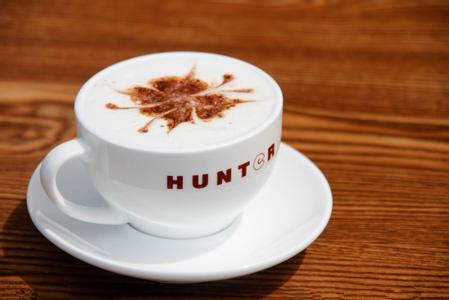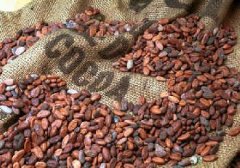Coffee Kingdom Brazil is located in Latin America in the Western Hemisphere.

Brazil is located in the Latin American region of the Western Hemisphere, located in the eastern part of South America and on the west coast of the Atlantic Ocean, bordering all countries on the South American continent except Ecuador and Chile; the vast majority of the territory lies between the equator and the Tropic of Cancer, is the most extensive tropical country in the world. The territory has a tropical rain forest climate and a tropical prairie climate. The superior tropical natural conditions are very suitable for the growth and production of tropical cash crops-coffee.
Coffee belongs to Rubiaceae, like heat, about 40 species, evergreen shrubs or small trees. The cultivated caffeine is often pruned and is generally 2 meters high. Fragrant white flowers bloom 4 years after planting, with a high butterfly-shaped Corolla. Raw berry, oval fruit, crimson when ripe, similar in shape and color to cherries. Coffee fruit is sweet and delicious, containing two bean-like seeds, called coffee beans. The picked coffee beans are dried in the sun, roasted and grinded into powder, that is, coffee powder, which has the effect of invigorating the stomach and excitement, boiling with water, supplemented with sugar, mellow fragrance, often called "the world's three major beverages" with cocoa and tea.
Brazil makes full use of the tropical geographical environment and attaches importance to the production and sale of coffee, so that the output, export volume and per capita consumption of coffee have been ranked first in the world for many years, and have been known as the "kingdom of coffee". But the hometown of coffee is not in Brazil, but in the Ethiopian province of Kafa in Africa. "Coffee" evolved from the place name of "Kafa". As early as 4000 years ago, the Agol people living in Ethiopia were engaged in coffee cultivation. The locally produced coffee was very fragrant and was transported to the Red Sea coast by caravan a long time ago. It was widely planted in the Middle East at the beginning of the 16th century. It later spread to Latin America, Southeast Asia and other parts of Africa.
Coffee was introduced into Brazil after the 18th century. In 1727, coffee was introduced into Port Belem, Brazil from Guyana. Since then, it has settled in Antuku, Brazil, mainly in the southeast coastal areas of Brazil. Namely, Sao Paulo, Parana, Sao Esprito, Minas Gerais and other four states. From the end of the 18th century to the 1920s, during the heyday of Brazilian coffee production, Brazil accounted for 75% of the world's total coffee production. Over a long period of time, coffee accounted for 2% of Brazil's total export revenue, thus making Brazil a well-deserved "coffee kingdom". The capitalist economic crisis that broke out in 1929 sharply reduced the world consumption of coffee, which dealt a heavy blow to the Brazilian coffee plantation economy. Since then, the proportion of Brazilian coffee production in export earnings has plummeted. In the past 30 years, with the rise and development of Brazilian modern industry, especially steel, shipbuilding, automobile, aircraft manufacturing and other industries, the status of coffee in the national economy has declined year by year, but it is still one of the pillars of Brazil's economy. Brazil is still the world's largest coffee producer and exporter.
With the declining status of Brazilian coffee, farmers have turned to a new production target-orange trees. Orange, Rutaceae, small evergreen trees, divided into "sweet orange" and "lime". "Sweet orange", leaves oval or ovate, apiculate, fruit round or oblong. Orange-red or orange-yellow, thick skin, generally smooth, not easy to peel off, not resistant to low temperature. "lime", with spines on branches, ovate or Obovate leaves, round or oblate fruit, orange-red or yellowish brown, thick peel, sour fruit, cold and drought tolerance, fruit can not be eaten raw, can be closely stained into orange cake, young fruit dried, can be used as medicine. Brazilians have a long history of getting rich from orange juice.
"Coffee Kingdom" lost coffee, but got orange juice, which is not a blessing.
Important Notice :
前街咖啡 FrontStreet Coffee has moved to new addredd:
FrontStreet Coffee Address: 315,Donghua East Road,GuangZhou
Tel:020 38364473
- Prev

Boutique coffee magic drink espresso
About 700 years ago, coffee, known as a magic drink, was brought to other countries in Europe and the United States with Italy's long water city culture: Canada, Switzerland, France, the United States and so on. To this day, it is popular all over the world. Italy is a beautiful country. When people visit Italy, they leave the deepest impression on two things: one is a man, and the other is coffee. In Italy, there is a name
- Next

Boutique coffee common sense coffee shop reflects your view of making friends
● When you are in a bad mood, many people like to be quiet alone, or find close friends to chat in the coffee house and accompany you through the low tide of the soul. If you like a coffee shop, what do you think is the biggest reason it pleases you? A. The view is very good B. There are many kinds of meals and the quality is very good C. The price is reasonable D. The boss is close
Related
- Beginners will see the "Coffee pull flower" guide!
- What is the difference between ice blog purified milk and ordinary milk coffee?
- Why is the Philippines the largest producer of crops in Liberia?
- For coffee extraction, should the fine powder be retained?
- How does extracted espresso fill pressed powder? How much strength does it take to press the powder?
- How to make jasmine cold extract coffee? Is the jasmine + latte good?
- Will this little toy really make the coffee taste better? How does Lily Drip affect coffee extraction?
- Will the action of slapping the filter cup also affect coffee extraction?
- What's the difference between powder-to-water ratio and powder-to-liquid ratio?
- What is the Ethiopian local species? What does it have to do with Heirloom native species?

